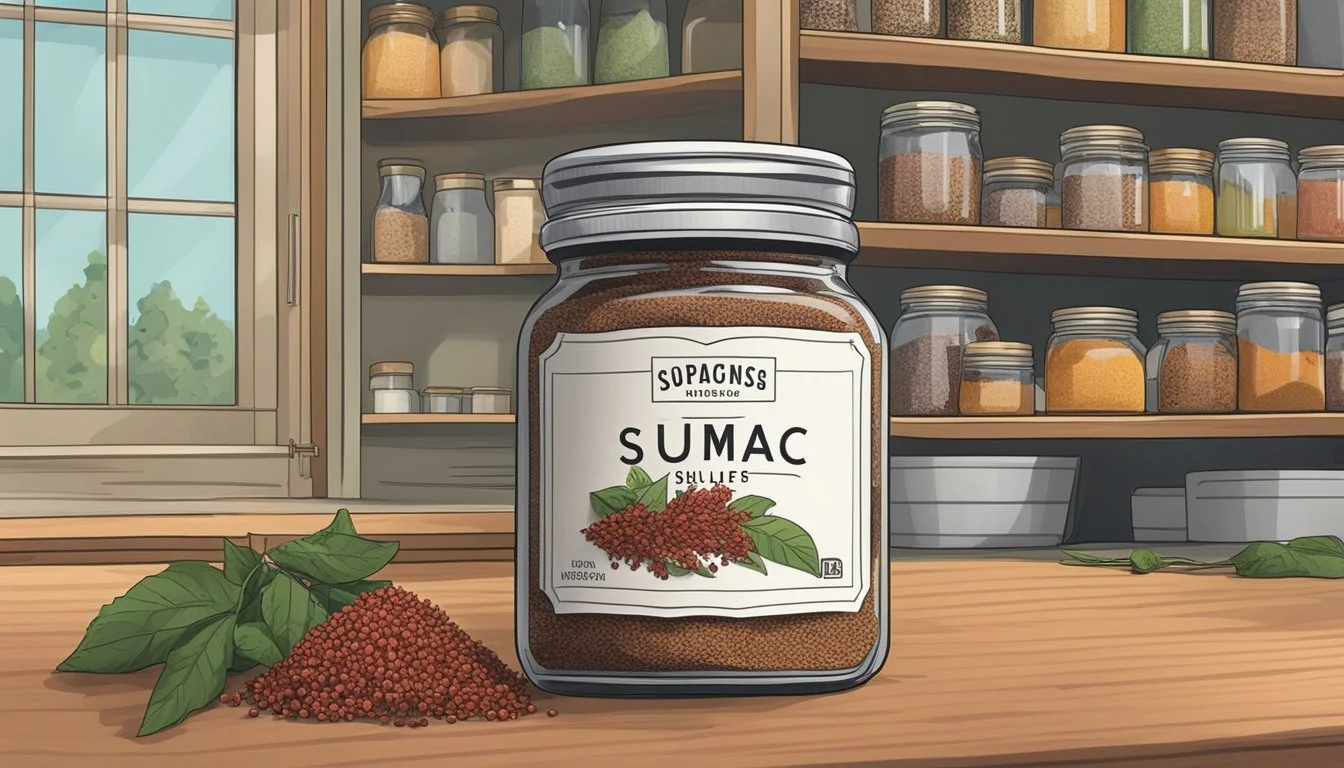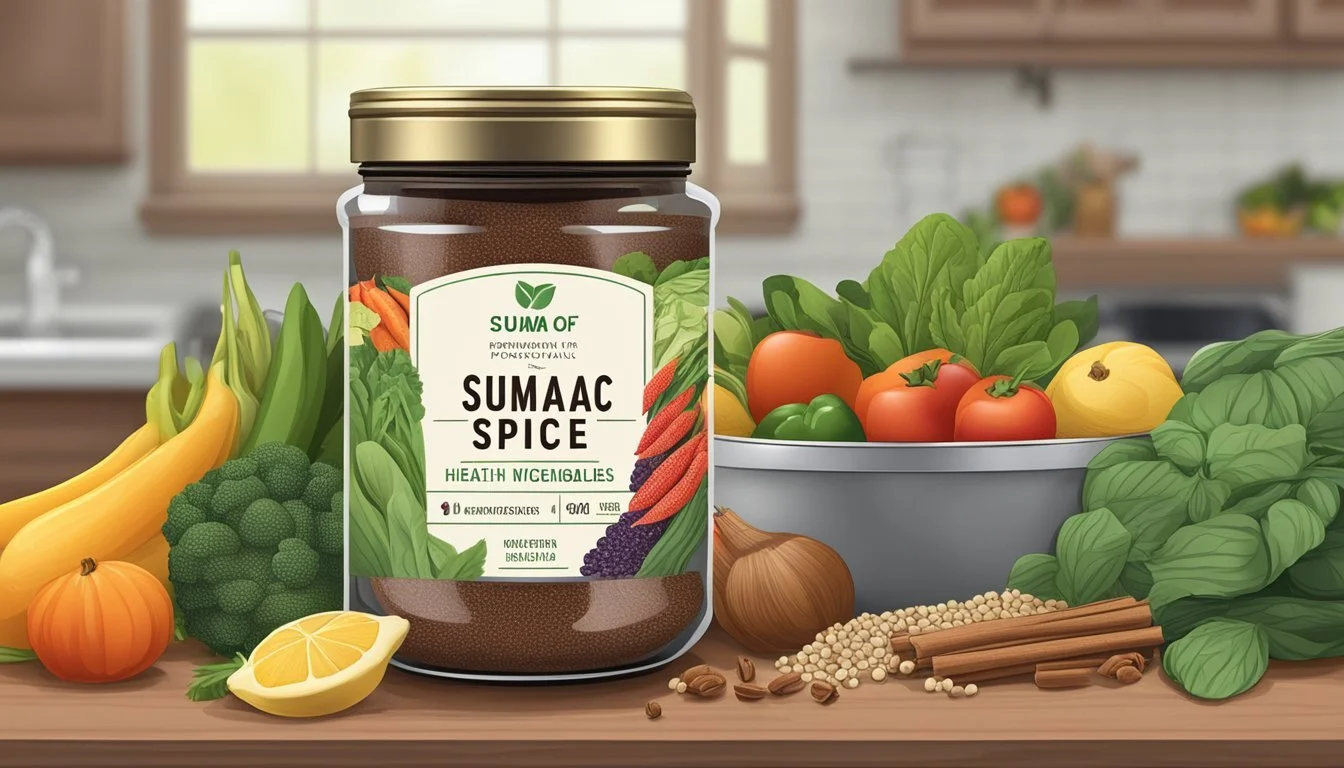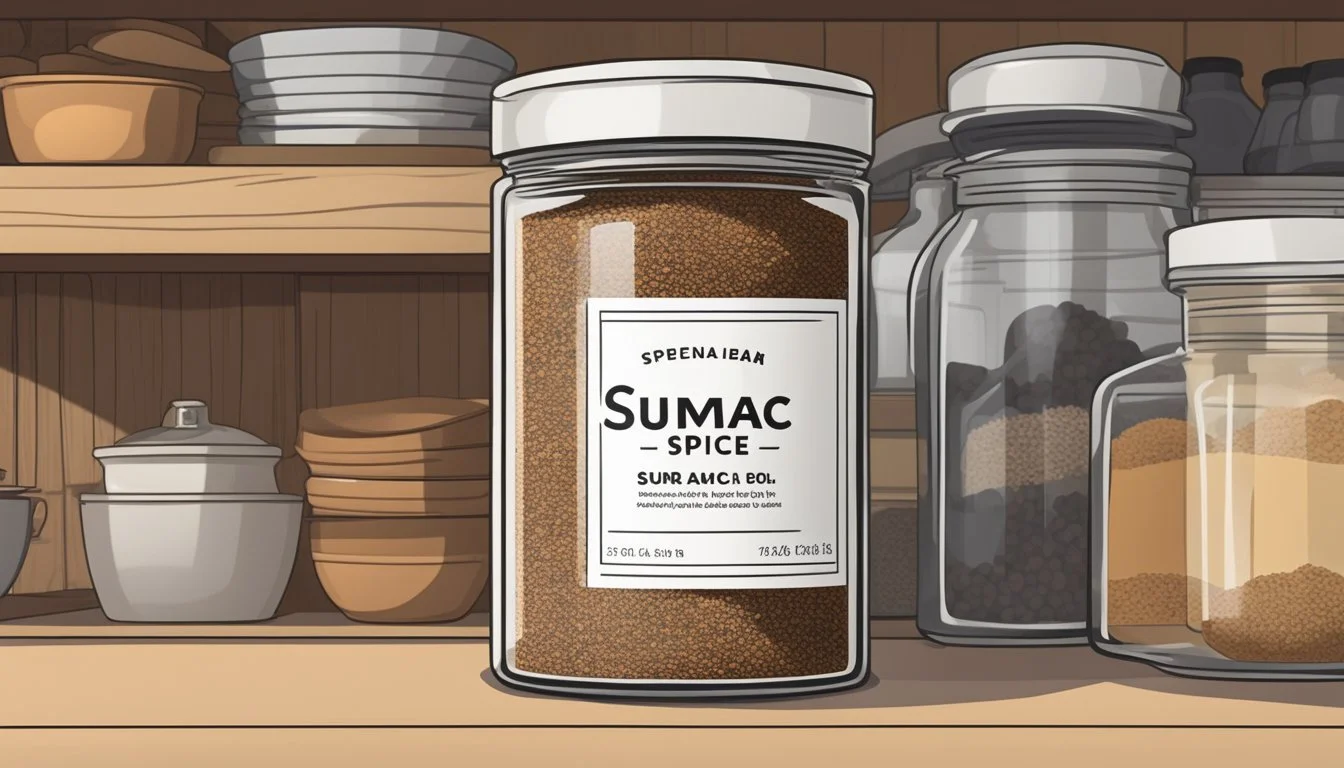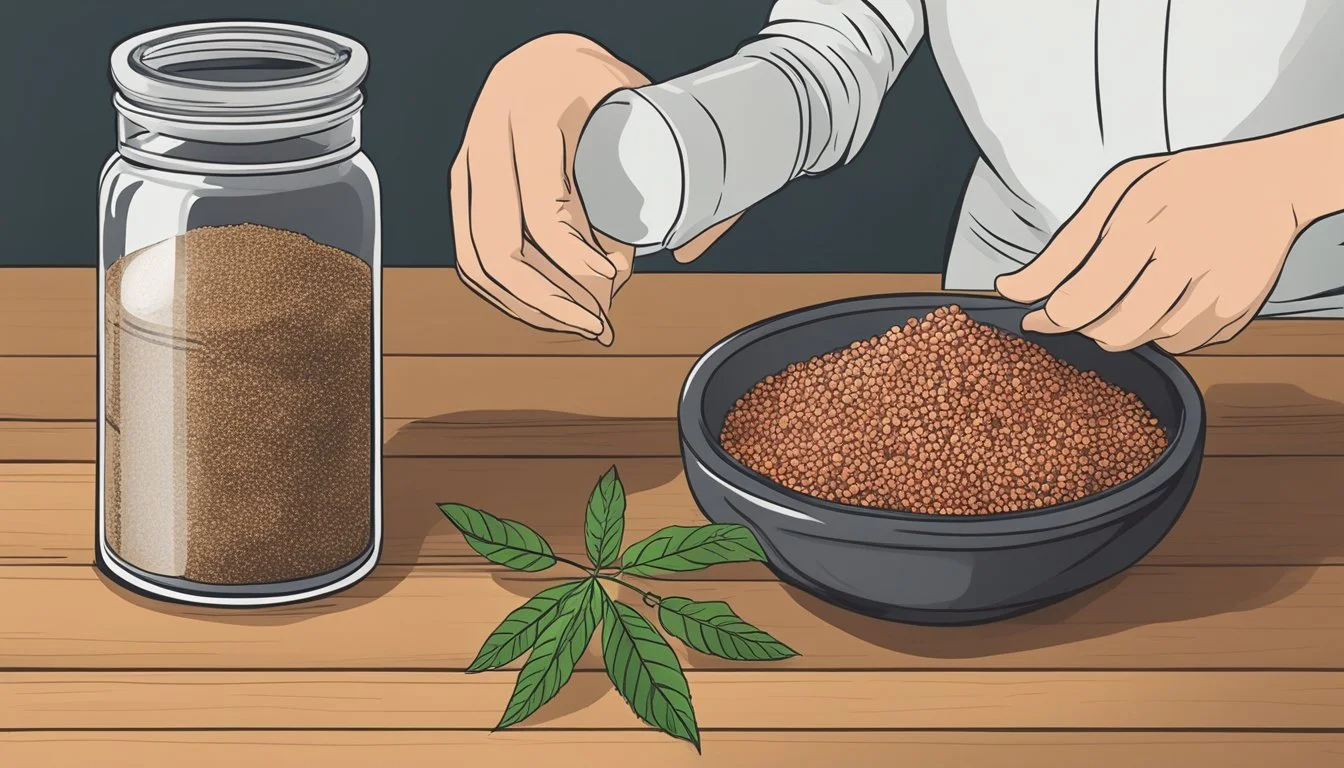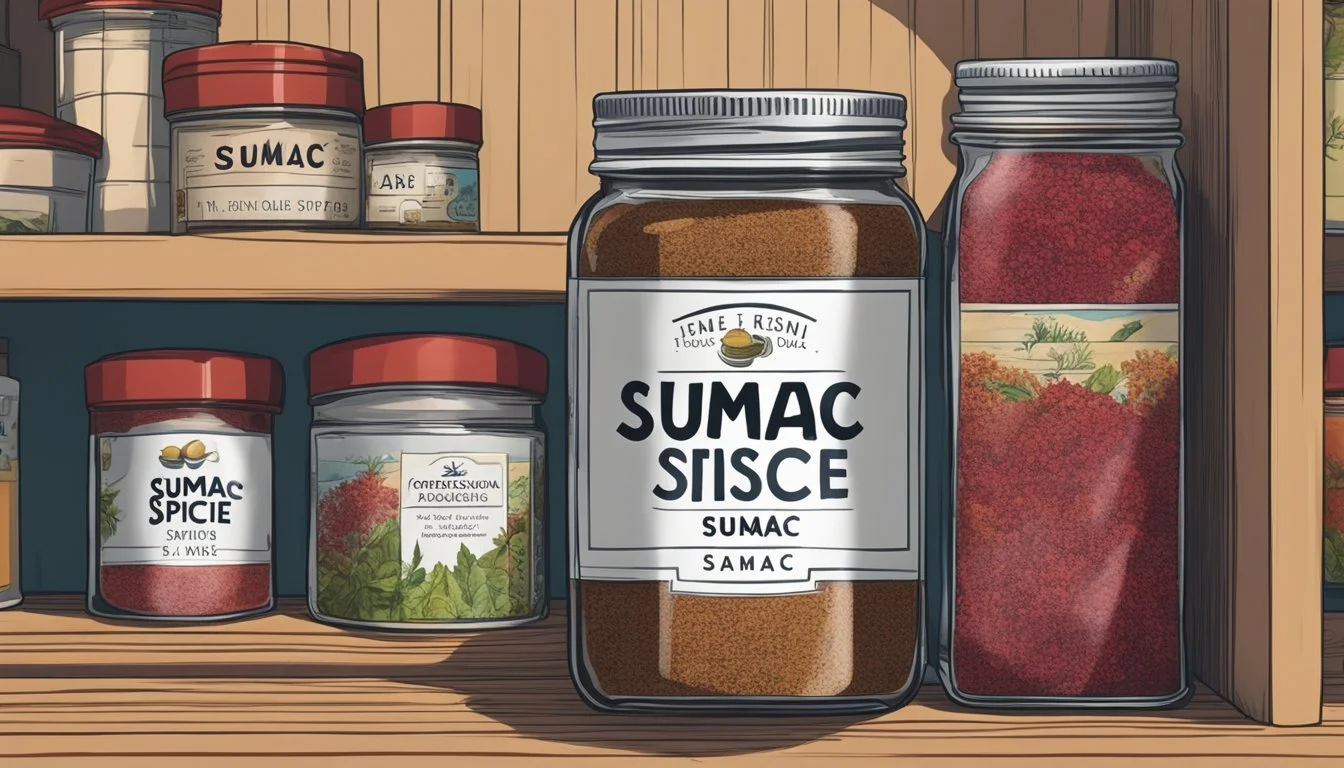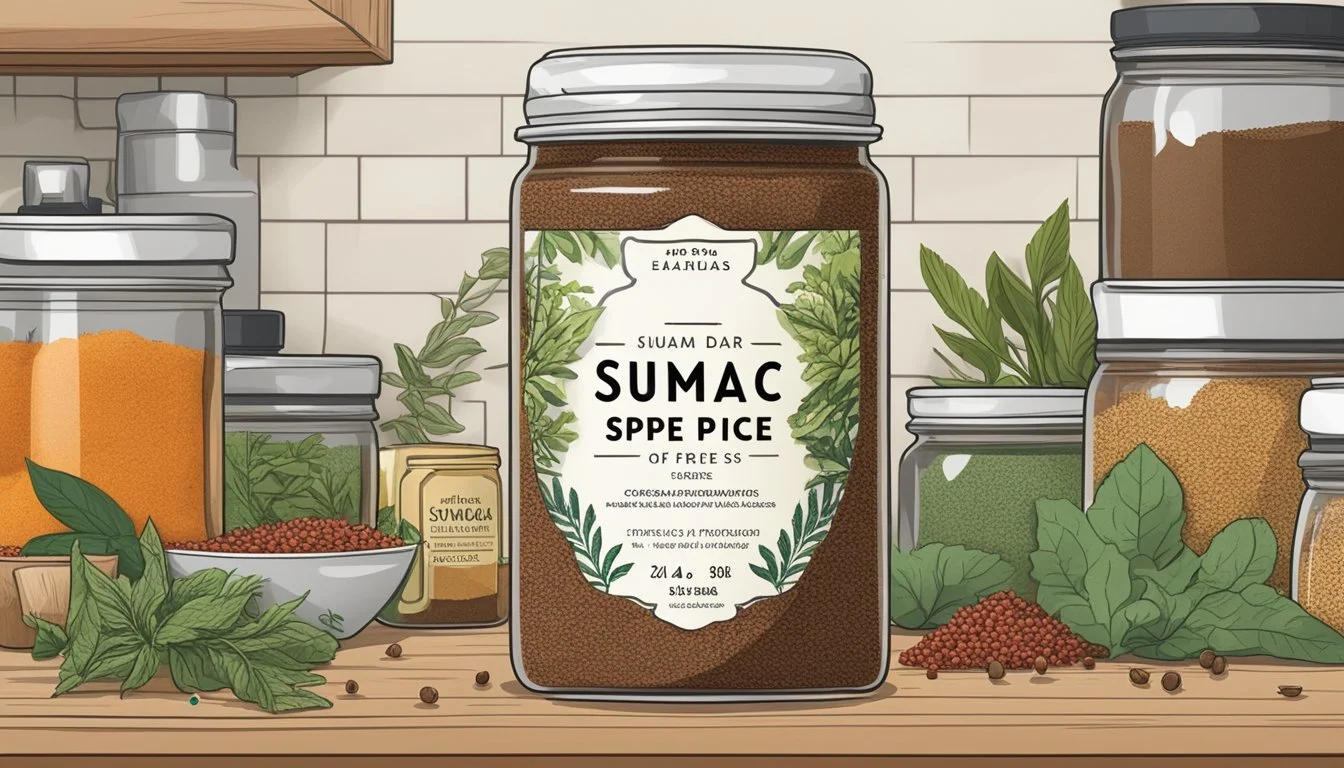How Long Does Sumac Spice Last?
Shelf Life and Storage Tips
Sumac, a quintessential spice in Middle Eastern cuisine, is celebrated for its ability to infuse dishes with a tangy lemon-like flavor and vibrant red color. This spice comes from dried berries of the sumac bush and can be used as both a garnish and a seasoning. Its versatility makes it a favored choice in culinary practices for enhancing everything from salads to meats with its sharp, sour zing.
When stored properly, sumac has a relatively long shelf life compared to other spices. It retains its characteristic flavor and color for an extended period if kept in a cool, dry place, away from direct sunlight. Proper storage involves sealing sumac in airtight containers which can extend its freshness and potency for as long as a couple of years. However, like all spices, sumac will degrade over time, and discerning when it is past its prime is key to ensuring the best outcomes in flavor and quality for culinary creations.
Understanding Sumac
Sumac is a versatile spice with a tangy lemon-like taste and is integral to Middle Eastern and Mediterranean cuisines, offering a vibrant red hue and a unique flavor to various dishes.
Culinary Profile
Sumac spice typically comes in a dried form, ground into a coarse powder that provides a tangy and slightly sour flavor often compared to a lemon. This characteristic taste is a result of the high concentration of malic acid in the berries, which is also present in green apples and gives them their sour taste. Sumac is commonly used to add acidity and a deep red color to meals. It's both a seasoning and a garnish, enhancing the profile of a dish with its fruity, citrusy aroma.
Flavor Profile: Tangy, slightly sour with a hint of citrus
Appearance: Deep red, coarse powder
Common Uses: Seasoning for meats, garnish for salads, and ingredient in spice blends such as za'atar
Historical and Cultural Significance
Historically, sumac has been an essential herb in Middle Eastern and Mediterranean cooking traditions. Its use dates back centuries as both a culinary ingredient and a medicinal herb. In the context of cuisine, sumac is not only cherished for its flavor but also for its role in cultural dishes like the Lebanese salad fattoush, the Palestinian chicken dish musakhan, and it's a key ingredient in the spice mix za'atar. The spice is celebrated for its ability to add a tang to dishes without the moisture that using actual lemon juice would introduce, thereby preserving the texture of the food.
Notable Dishes: Fattoush, Musakhan, Za'atar
Cultural Importance: A staple in traditional recipes and regional cooking
By understanding sumac's culinary profile and its place in historical and cultural contexts, cooks can appreciate the spice's potential and employ it effectively in their cooking arsenal. Its use extends beyond the borders of the Middle East and Mediterranean, finding its way into modern kitchens around the world.
Types of Sumac
This section explores the different Sumac varieties, including how they differ in form and storage. It is important to note that while some types of Sumac are ideal for culinary use, others are toxic and should be avoided.
Varieties and Characteristics
Sumac comes from the genus Rhus, within the cashew family, Anacardiaceae. The species Rhus coriaria is commonly used for culinary purposes. This type of Sumac is characterized by its red berries, which are dried and ground into a tangy, lemony spice. Two notable varieties of edible Sumac include:
Staghorn Sumac (Rhus typhina): Identified by its velvety branches and cone-shaped clusters of red berries.
Smooth Sumac (Rhus glabra): Known for its smooth, hairless branches and red berries.
It's crucial to distinguish these from Poison Sumac (Toxicodendron vernix), which has white berries and is related to poison ivy and poison oak. Contact with poison Sumac can cause severe allergic reactions due to its toxic nature.
Ground vs. Whole Sumac
Sumac can be purchased in two main forms:
Ground Sumac: The dried berries are ground into a coarse powder, which is commonly used as a spice for its bright, acidic flavor profile.
Whole Sumac Berries: Less common, these can be used fresh or dried in infusions or as a garnish.
Ground Sumac is more prevalent due to its ease of use and longer shelf life, while whole Sumac berries offer a fresher taste but may have a shorter shelf life.
Storage Differences
The shelf life of Sumac varies depending on its form:
Ground Sumac: It retains its potency for about 6 months if stored in a cool, dark place within an airtight container.
Whole Sumac Berries: They have a longer shelf life of up to 1 year under similar storage conditions.
Both forms need to be kept away from moisture and heat to maintain their flavor and anti-inflammatory properties. Proper storage is key to preserving the quality of Sumac, whether ground or whole.
Proper Storage Methods
Ensuring that Sumac maintains its quality over time requires adherence to specific storage guidelines that focus on preserving the essential oils and antioxidants responsible for its flavor and freshness.
Optimal Conditions
The shelf life of Sumac can be significantly extended by storing it under optimal conditions. These conditions include placement in a cool, dark, and dry environment such as a spice cabinet or pantry. Airtight containers, preferably made of dark glass, are ideal for protecting Sumac from exposure to moisture and light, which can degrade the spice’s oils and lead to loss of flavor. Storing Sumac away from direct sunlight and heat sources further prevents the degradation of its natural antioxidants and oils.
Extending Shelf Life
To maximize Sumac’s shelf life, one should take additional measures:
Moisture Control: Moisture is a catalyst for mold growth and can lead to clumping. Always use completely dry utensils to measure Sumac and ensure the container is sealed tightly after each use.
Air Exposure: Limiting air exposure helps maintain freshness. After each use, sealing the spice in an airtight container will reduce the potential for flavor loss.
Container Material: Containers that offer UV protection, such as those made from colored glass, are recommended. These containers help shield the spice from harmful light rays.
By observing these storage practices, one can maintain the quality and extend the lifespan of Sumac in their kitchen.
Health and Nutritional Benefits
Sumac spice is celebrated for its notable health and nutritional benefits, primarily due to its high antioxidant content. Antioxidants play a crucial role in neutralizing free radicals, which are unstable molecules that can cause oxidative stress, potentially leading to chronic diseases like heart disease and cancer.
Antioxidant Profile: Sumac contains polyphenols and flavonoids such as gallic acid, tannins, and quercetin.
Vitamin C: This spice is also an excellent source of vitamin C, further enhancing its antioxidant capacity.
The anti-inflammatory properties of sumac may assist in reducing inflammation, which is associated with various health conditions. Regular consumption of anti-inflammatory substances can be beneficial in managing symptoms of such conditions.
Anti-inflammatory: Sumac's compounds may help mitigate inflammatory responses in the body.
In addition to antioxidants and anti-inflammatory effects, sumac may offer other health advantages:
Acid Content: The presence of organic acids contributes to sumac’s tart flavor and potential health benefits.
Heart Health: Consumption of sumac might impact cardiovascular health by possibly reducing risk factors, such as high blood pressure and balancing cholesterol levels.
Blood Sugar Control: Compounds in sumac may aid in regulating blood sugar levels, which is important for preventing and managing diabetes.
The inclusion of sumac in one's diet could contribute positively to overall health, although further research is needed to fully understand its potential health benefits and efficacy in preventing or treating specific health conditions. It is essential for individuals to consider sumac as a complement rather than a substitute for traditional medical treatments.
Culinary Applications
In exploring the culinary applications of sumac, one discovers its versatility and ability to infuse dishes with a tart, lemony flavor. It serves as a staple seasoning in Middle Eastern cuisines, adding both color and taste to a variety of recipes.
Common Dishes and Pairings
Meats: Sumac is often used to season lamb, chicken, and turkey. Its acidity cuts through the fattiness of meats, making it an ideal rub or sprinkle before grilling.
Lamb: A classic pairing, sumac brings a refreshing zest to lamb chops (What wine goes well with lamb chops?) or stews.
Chicken: Enhances roasted or grilled chicken with a subtle, citrusy tang.
Turkey: Ground sumac can add a twist to traditional turkey marinades.
Fish: A light sprinkle on grilled or baked fish elevates the natural flavors.
Salads and Vegetables:
Fattoush Salad: A traditional Lebanese salad that uses sumac for its characteristic tangy flavor.
Grilled Vegetables: Sumac can be sprinkled over vegetables before or after grilling for a zesty kick.
Traditional Dishes:
Musakhan: A Palestinian dish where chicken is cooked with onions, sumac, and other spices, typically served on flatbread.
Hummus: A dash of sumac on top of hummus adds a decorative and flavorful twist.
Flavor Enhancements and Substitutes
Marinades and Dressings: Sumac's acidity makes it an excellent addition to marinades and salad dressings as a less liquid substitute for lemon juice or vinegar.
Marinades: Add sumac to impart a sour note to marinades for meats and fish.
Salad Dressings: Mix with olive oil, garlic, and herbs for a tangy dressing.
Desserts: Its lemony flavor can be an unexpected yet delightful addition to certain sweets.
Substitute Considerations:
When sumac is unavailable, suitable alternatives include lemon zest (how long does lemon zest last?) mixed with salt, tamarind, or a combination of vinegar and paprika.
Incorporating sumac in cooking does more than just season the food; it adds a layer of complexity with its fruity, sour profile. Its versatility allows it to be used across various dishes, enhancing flavors without overwhelming them.
Identifying and Avoiding Spoilage
When storing sumac, it's essential to know its shelf life and recognize the signs of spoilage to prevent the use of a degraded product.
Shelf Life Duration
Sumac, as a dried spice, generally maintains its quality for up to two to three years when stored properly. Ensuring it is kept in a cool, dark place away from heat, light, and moisture can help maximize its shelf life. The spice should be in an airtight container to protect its aromatic compounds from degrading.
Signs of Deterioration
Color: Sumac's vibrant, deep red or burgundy hue fades when the spice starts to go bad. A loss in color is often the first sign that the spice is aging and losing its potency.
Aroma: A strong, tangy scent is characteristic of fresh sumac. When this aroma diminishes or changes significantly, it's an indication that the spice is past its prime.
Mold: The presence of mold or any abnormal growths on the spice signifies spoilage, and the sumac should not be consumed.
Taste: If the spice has lost its citrus-like, tangy flavor, this indicates deterioration. Tasting a small amount can often confirm whether the spice is still usable.
It's important to check the spice regularly, especially before use, for these signs of deterioration to ensure the quality of the sumac.
Sumac Spice in the Marketplace
Sumac, particularly from the species Rhus coriaria, is treasured for its tart flavor in Middle Eastern cooking. When seeking to purchase this spice, consumers should consider both availability and quality to ensure an authentic culinary experience.
Where to Buy
Sumac is commonly found in:
Middle Eastern grocers: These specialty stores often offer a range of sumac to choose from.
Online spice shops: Retailers such as The Spice House sell sumac, providing descriptions of flavor and origin.
Health food stores or specialty sections: Look for sumac in the international aisle.
Buyers should search for "all-natural sumac" without additional additives or fillers.
Evaluating Quality
Key indicators of high-quality sumac include:
Color: A deep red or burgundy hue suggests good quality.
Aroma: Fresh sumac has a tangy scent, reminiscent of citrus.
Taste: A balance of sourness and earthiness is characteristic of pure sumac.
Texture: The spice should be ground to a consistent, fine powder.
When assessing sumac, one should avoid any product with unnatural colorants or excessive additives. A purer form ensures traditional taste in culinary uses, from seasoning meats to enhancing dips and dressings.
DIY Sumac Handling
When handling sumac at home, one should focus on proper processing techniques and the creation of flavor-enhancing mixes that can amplify the culinary experience.
Home Processing
To ensure the longevity and quality of sumac spice, a home cook should consider following these steps for home processing:
Harvesting: Collect sumac berries during dry weather to avoid moisture, which can lead to mold. Look for dense clusters of red berries.
Drying: Spread the berries out on a baking sheet and dry in a shaded, well-ventilated location, or use a dehydrator if available.
Separating: Once dried, separate the berries from the stems and store them whole in airtight containers.
Grinding: Grind berries into a coarse powder using a spice grinder or a mortar and pestle when ready to use.
By diligent processing, one ensures that sumac remains fresh and potent for a longer period.
Creating Mixes and Blends
Sumac's versatility allows it to be paired with various ingredients to create unique mixes and blends suitable for a wide range of dishes:
Allspice and Black Pepper: Mix ground sumac with allspice and black pepper to create a robust blend for marinades.
Olive Oil and Lemon: Combine sumac with olive oil and a squeeze of lemon juice for a zesty dressing.
Dried Herbs: Blend sumac with dried herbs like basil, parsley, mint, and thyme to enhance Mediterranean dishes.
Tamarind and Mango: For a fruity and tangy flavor profile, sumac can be paired with tamarind and dried mango powder. (how long does mango powder last?)
Paprika and Garlic: Adding sumac to paprika and garlic powder (how long does garlic powder last?) creates a blend that imparts both heat and tanginess, perfect for sprinkling on meats and vegetables.
These sumac-based blends can be stored in airtight containers away from direct light and heat to maintain their potency and flavor.
Alternative Uses and Practices
Exploring sumac beyond its common use as a spice in Mediterranean cuisine, one finds that this tangy, lemony ingredient has versatile applications. Its high antioxidant content and citric acid (how long does citric acid last?) properties expand its utility to various creative and sustainable practices.
Sumac Beyond the Kitchen
Sumac, often associated with its culinary uses in temperate climates, holds considerable potential in non-edible contexts. Used historically for its medicinal properties, sumac boasts a high concentration of antioxidants, which have been traditionally harnessed in tea infusions aimed at combating various ailments. Apart from its health applications, sumac's vibrant hue has been employed as a natural dye, imparting rich color to fabrics.
In the realm of gardening, sumac plays a significant role as well. The sumac plant is related to the cashew family and thrives in temperate regions. Gardeners often use sumac shrubs for landscaping due to their hardy nature and ornamental value, leveraging their ability to flourish with minimal care, even in challenging soil conditions.
Experimental Cooking Tips
When sumac's shelf life nears its end or one simply seeks to reuse and repurpose this spice, innovative culinary techniques come into play. A few tips include:
Lemon Substitute: Sumac can replace lemon zest or citric acid in recipes, offering a similarly acidic but more nuanced flavor profile.
Tea Enhancement: A pinch of sumac added to tea can introduce an unexpected zest and enrich the beverage with antioxidants.
Vinegar Infusion: Creating a sumac-infused vinegar adds a tangy twist to salad dressings and marinades, acting as a distinctive substitute for standard vinegars.
Culinary enthusiasts also experiment with sumac as a spice rub, benefiting from its ability to impart a deep red color and tart taste to meats and vegetables. The key is to think of sumac not just as a spice but as an ingredient that can lend its citrusy notes in innovative ways, allowing for experimentation and the creation of unique flavor combinations.
FAQs and Misconceptions
This section addresses common questions and clarifies the differences and uses of sumac spice, distinguishing it from its poisonous counterpart.
Difference Between Culinary and Poison Sumac
Culinary sumac comes from Rhus coriaria, a shrub that produces deep red berries which, when dried and ground, yield the tangy and slightly sour sumac spice commonly used in Middle Eastern and Mediterranean cuisines. It adds a lemony flavor to dishes without added liquid, and is favored for its versatility in cooking. In contrast, poison sumac is a different plant altogether, related to poison ivy and poison oak, and contains urushiol, an oil that can cause severe allergic reactions. Poison sumac is not edible and is characterized by white berries, which are a key visual cue to distinguish it from the culinary variety.
Cooking with Sumac: Do's and Don'ts
When cooking with sumac, one should embrace its versatility. Use it as a dry alternative to lemon juice or vinegar to impart a tangy flavor, which is particularly beneficial in dishes where additional liquid is undesirable. However, it's important not to confuse sumac spice with its poisonous relative. Do store sumac in a cool, dark place to help maintain its potent flavor and anti-inflammatory properties. Sumac has no connection to the cashew family, and is free of the allergens associated with cashews. It's suitable for those seeking a spice that delivers a pop of color and a distinct, tangy taste to their culinary creations.
Conclusion
Sumac is a valued spice for its tangy lemon-like flavor and is commonly utilized in culinary practices, especially within Middle Eastern cuisine. The shelf life of sumac, like most spices, depends greatly on appropriate storage. In optimal conditions, sumac can be expected to retain its desirable qualities for up to three years. Here are key considerations for maintaining its freshness:
Cool Environment: Store sumac in a cool, dark place away from direct sunlight.
Airtight Containers: An airtight container is essential to prevent moisture and foreign odors from affecting the quality.
Avoid Heat: Keep sumac away from heat sources like stoves or ovens to preserve its flavor.
Aside from its culinary appeal, sumac is attributed with various health benefits, including potent antioxidant properties. However, these attributes are best preserved when the spice is stored correctly. While sumac may not spoil in a traditional sense, its flavor potency diminishes over time.
It is recommended to periodically check the spice for freshness by assessing its vibrant color and distinct aroma. If either characteristic has noticeably faded, it may be time to replace your supply to ensure the best quality for your culinary creations.


